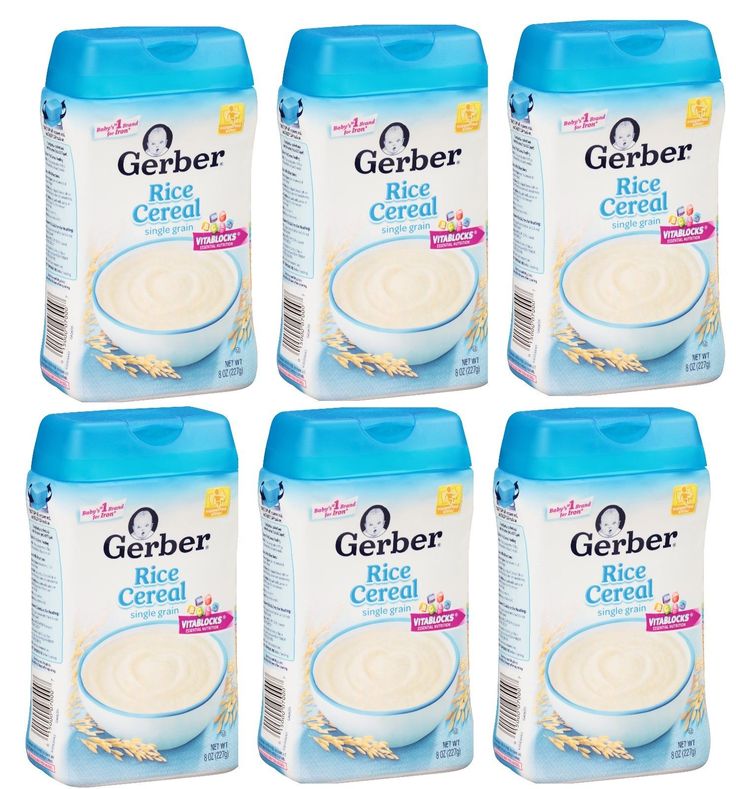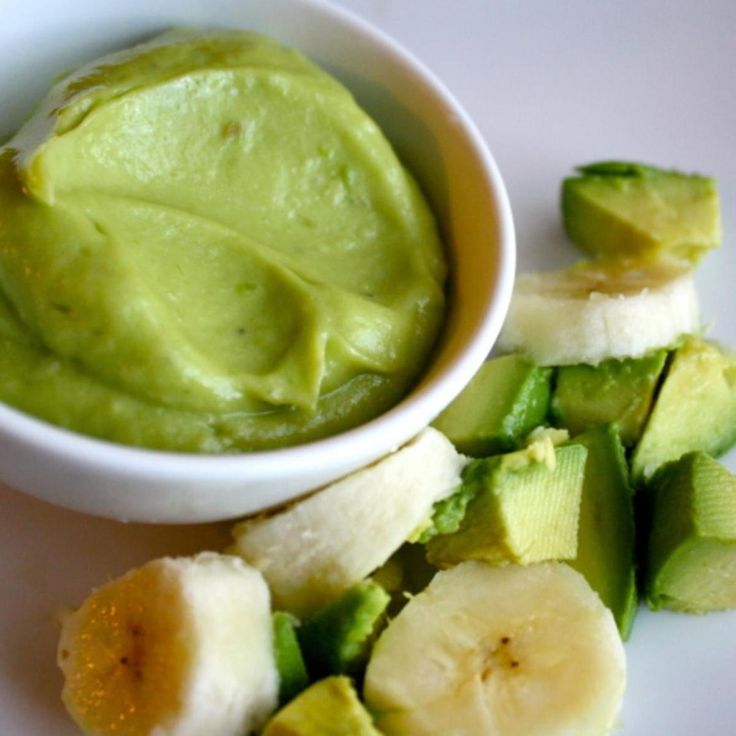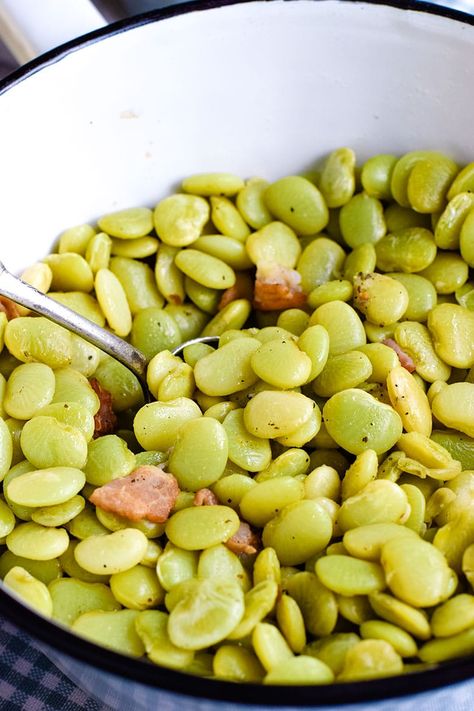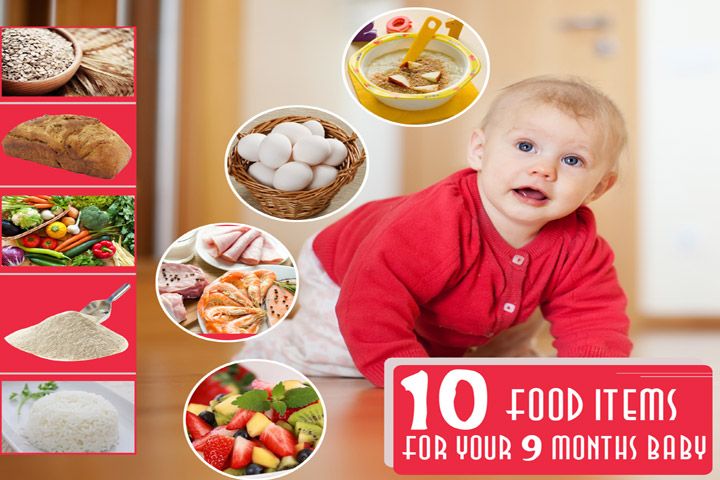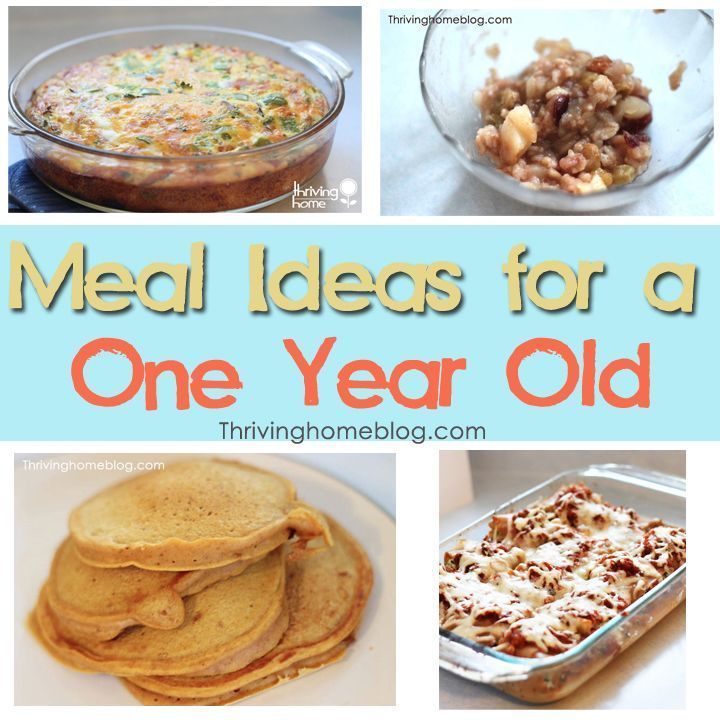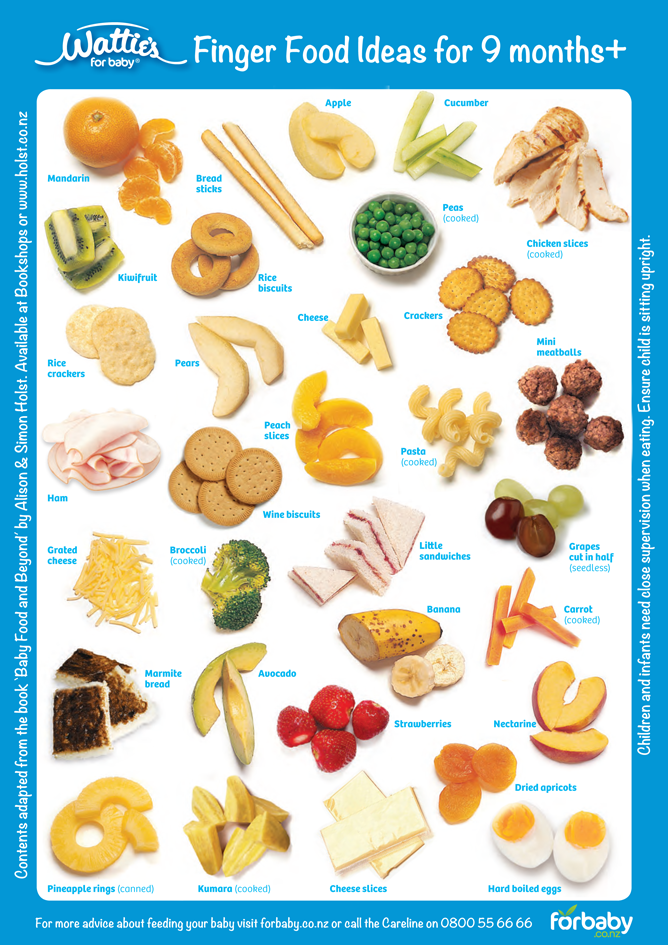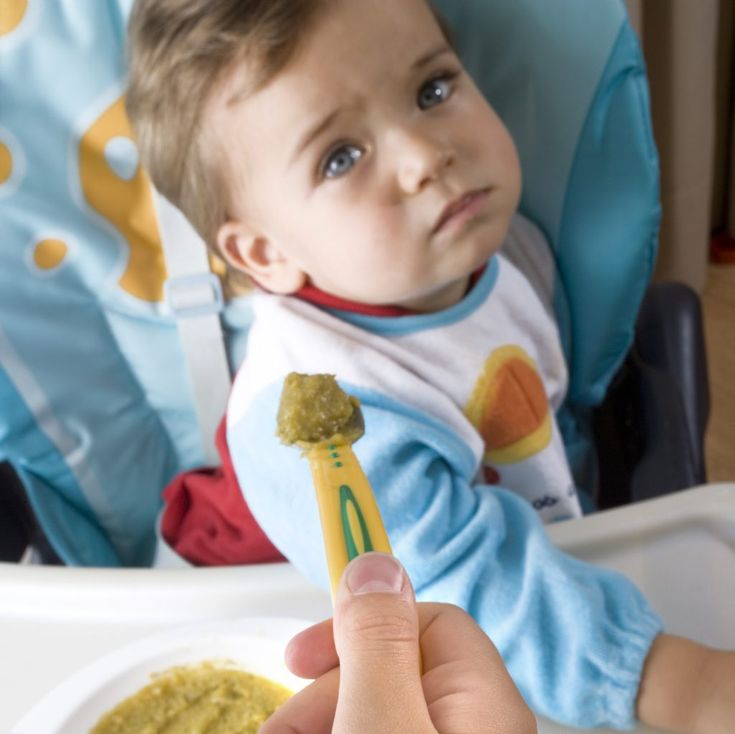Finger foods for teething babies
13 Best Finger Foods for Baby
Introducing finger foods for baby is an exciting and nerve-racking time. Between the mess, possible allergies and potential choking hazards, it’s enough to give some parents white knuckles as they hover over the high chair. But while you should certainly exercise caution, there are lots of great baby finger food ideas that will make mealtime fun and nutritious, and let your growing child practice the important art of self-feeding.
In this article:
When can babies eat finger foods?
Baby finger food safety
How to introduce new finger foods for baby
Best finger foods for baby
When Can Babies Eat Finger Foods?
There’s no hard and fast rule in terms of when babies can start eating finger foods, says William Dietz, MD, PhD, director of the Sumner M. Redstone Global Center for Prevention and Wellness at the Milken Institute School of Public Health at the George Washington University in Washington, DC, and co-editor of the American Pediatric Association’s (AAP) Nutrition: What Every Parent Needs to Know. Rather than focusing on baby’s age, says Dietz, “the first indicator you should look for is that the baby is interested.” So how can you tell when baby’s interest is piqued? Reaching for the food as you’re feeding her, grabbing the bowl or spoon, putting the spoon in her mouth and fussing when she sees you eat (because she wants in!) are all signs your child may be ready. “Babies generally want to feed themselves,” Dietz says. “That’s a normal drive.”
Being able to sit independently is another good clue that babies are physically ready to try finger foods, says Susan M. McCormack, MA, senior speech language pathologist at Children’s Hospital of Philadelphia and a board-certified specialist in swallowing and swallowing disorders. If they can sit up in the high chair, then they might be ready to try their hand at finger foods.
Some guides suggest waiting to introduce baby finger foods until your child has mastered a pincer grasp—the ability to pick up small objects between the thumb and forefinger—but Dietz says this isn’t totally necessary.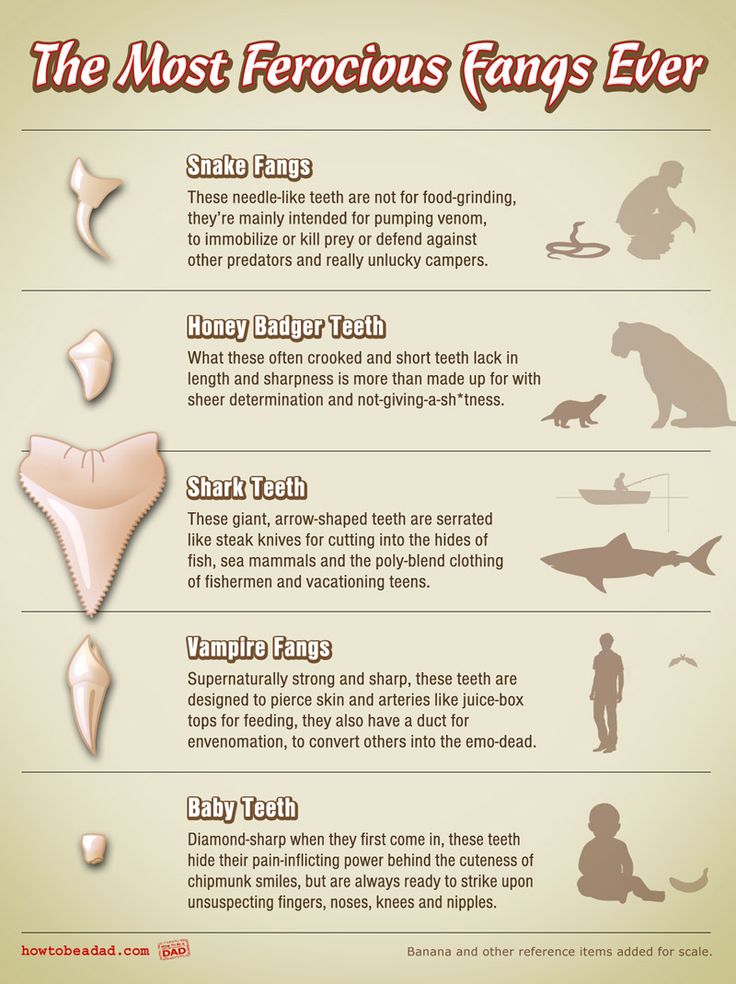 “Initially when children start to feed themselves, they don’t have a pincer grasp,” he says. “So they’re using their whole hand and putting their hand in their mouth. And that’s fine.”
“Initially when children start to feed themselves, they don’t have a pincer grasp,” he says. “So they’re using their whole hand and putting their hand in their mouth. And that’s fine.”
If you’re waiting for your infant to sprout teeth before moving on from purees, think again. “Babies don’t need teeth to learn to eat solids and learn to chew,” McCormack says. Those strong little gums are perfectly capable of mashing up soft solids—if you’ve ever let baby teethe on your finger, then you have some idea of just how powerful they are!
Baby Finger Food Safety
When choosing the best finger foods for baby—whether you’re starting at 6 months or 9 months—experts agree that it’s best to begin with small pieces of soft food that dissolve easily.
As your infant grows and becomes comfortable eating finger foods, you can branch out, McCormack says. “As a baby develops better tongue patterns to control food pieces as well as more mature chewing, he can better ‘chew’ the foods that break apart, like pieces of fruits and vegetables.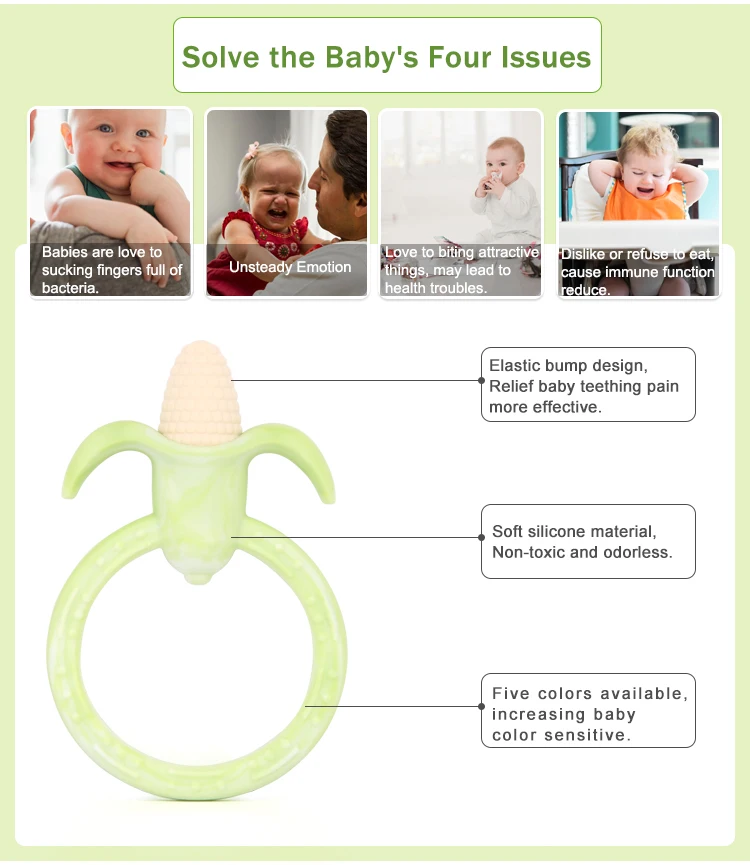 A one-year-old can also bite off pieces of food that a 6-month-old can’t.”
A one-year-old can also bite off pieces of food that a 6-month-old can’t.”
Avoid giving baby finger foods that are large, sticky or don’t dissolve easily, because they’re potential choking hazards, Dietz warns. He suggests steering clear of foods like hot dogs, carrots, nuts, grapes, popcorn, candy and globs of peanut butter.
Another thing to keep in mind when you’re picking out the best finger foods for babies is that a lot of adult foods—particularly snacks—can be super salty. “Often parents will doctor a food so it appeals to their tastes, and their taste may have bigger amounts of sodium than a baby’s taste,” Dietz says. When preparing food for baby, leave out the salt whenever possible. (You can always add it separately to your portion if you’re cooking for the family).
How to Introduce New Finger Foods for Baby
When babies first start on finger foods, breast milk and formula will still be their main source of nutrition, followed by purees. You should continue to spoon-feed your child initially, “but during the feeding process, they should also be allowed to feed themselves,” Dietz says. Put some finger food on her high-chair tray and let her try to get it into her mouth in between the spoonfuls of food you’re feeding her. If she gets really frustrated, go ahead and help her out.
Put some finger food on her high-chair tray and let her try to get it into her mouth in between the spoonfuls of food you’re feeding her. If she gets really frustrated, go ahead and help her out.
Most important, follow your child’s cues and “let your baby be the guide,” McCormack says. If he doesn’t respond positively, take a step back and try again later. But keep in mind that babies often crinkle up their faces when they try something new, which can look like they don’t like something, Dietz says. It can take up to 20 times before they’re used to certain foods. “Parents shouldn’t force food, but they should be persistent in offering,” Dietz says.
McCormack also suggests easing into finger foods by offering thicker purees with a bit of texture to them. “Try alternating bites of the smooth puree with a slightly thicker or mashed food to help your baby get used to the new textures in her mouth,” she says.
Remember, too, that this is a messy process. Parents might want to lay newspaper or an easy-to-clean vinyl tablecloth on the floor, since it’ll be a while (like, years) before your kid manages to get more food in his mouth than on the floor, Dietz advises.
Finally, never leave baby unattended while she’s eating, and keep an eye out for signs of choking. It may be tempting to hold off on introducing finger foods until your child is older, but helping baby develop this skill has multiple benefits, McCormack says, including “development of independence, fine motor skills and self-feeding skills, as well as development of oral patterns to support texture progression.” Whether you start baby finger foods at 6 or 9 months, just follow baby’s lead and let him have fun with it.
Best Finger Foods for Baby
If you’re looking for baby finger food ideas, think about options that are soft, small and easily gummed. Here are a few of the best finger foods for baby to get started—including finger foods for baby with no teeth! While the same finger foods are as appropriate for a 6-month-old as they are for a one-year-old baby, you can begin to offer slightly larger pieces that they can bite off themselves as they become more confident. Stick with these healthy options, and you’ll start baby off on the right path for healthy eating.
Stick with these healthy options, and you’ll start baby off on the right path for healthy eating.
Image: The Bump
1. Puffs and dry cereal. Puffs and O-shaped dry cereal are some of the most popular first finger foods for good reason: They let baby practice the pincer grasp by picking up one at a time. And as McCormack explains, they also “mix well with saliva and are easy for the infant to manage in their mouth without choking.”
2. Teething biscuits and lightly toasted bread. Teething biscuits and small pieces of lightly toasted bread are another great starter finger food, since they soften quickly. Just note that some breads can turn gummy and stick in baby’s mouth; lightly toast the bread and cut into very small pieces to avoid a choking hazard. As baby gets older (around 9 to 12 months), you can offer slightly larger pieces or serve bread topped with mashed banana or avocado, or a super-thin layer of hummus or peanut butter.
3.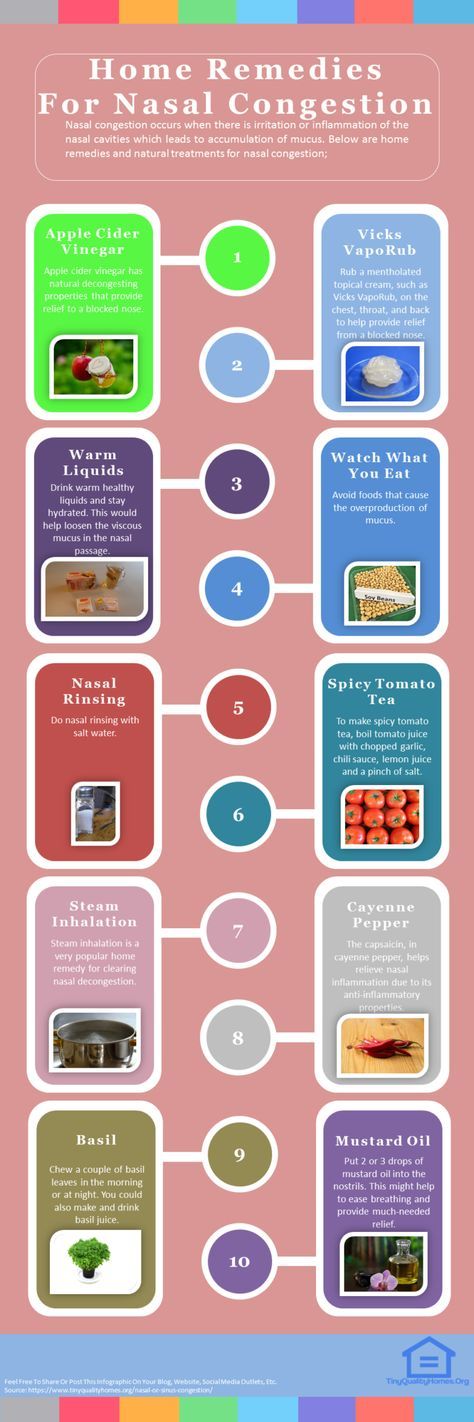 Scrambled eggs. Doctors used to advise waiting to introduce eggs, but the AAP now recommends early exposure to potentially allergenic foods. Which is great news, since scrambled eggs are an ideal early finger food! Keep your love of runny yolks to yourself for now, however, and cook those eggs thoroughly, cut into small pieces and avoid adding salt.
Scrambled eggs. Doctors used to advise waiting to introduce eggs, but the AAP now recommends early exposure to potentially allergenic foods. Which is great news, since scrambled eggs are an ideal early finger food! Keep your love of runny yolks to yourself for now, however, and cook those eggs thoroughly, cut into small pieces and avoid adding salt.
4. Soft fruit. Very ripe fruit is naturally soft, making them some of the best finger foods for babies. Ripe banana, peach, watermelon, raspberries, blueberries and cantaloupe cut into small pieces are all great finger food options.
5. Avocado. A rich source of omega-3 fatty acids—which can help boost baby’s brain development—avocados are, like puffs, often one the first baby finger foods, even when your little one has no teeth. Be warned: Avocado can get messy fast, but it’s well worth it (and can result in some hilarious pics for the baby album).
6. Pasta. Though recipes often recommend cooking pasta al dente, when it comes to feeding baby, you’ll want to slightly overcook it so it’s nice and soft. To start, try small pasta shapes like orzo or mini shells, or cut up fusilli or penne. Initially serve it plain, but as baby is introduced to more foods you can toss the pasta in a little butter, olive oil or low-sodium tomato sauce.
To start, try small pasta shapes like orzo or mini shells, or cut up fusilli or penne. Initially serve it plain, but as baby is introduced to more foods you can toss the pasta in a little butter, olive oil or low-sodium tomato sauce.
7. Tofu. Whether cooked or uncooked, tofu is a wonderful plant-based source of protein and a perfect finger food for babies. Opt for firm tofu, which is still quite soft, as opposed to soft or silken tofu, which will likely fall apart in baby’s hand and frustrate her.
8. Cooked vegetables. Though it will be a while before baby can hit the crudités platter, cooked vegetables make excellent baby finger foods. To get the most nutrients out of your vegetables, steam or roast them until soft, and, of course, cut them into small pieces. Try sweet potato, carrot, broccoli, cauliflower or beets (opt for yellow beets for less mess) to start. As baby gets bigger, you can offer steamed carrot sticks or peeled, roasted sweet potato wedges.
9. Cheese. If baby has shown no signs of a dairy allergy, then it’s perfectly safe to introduce soft cubes of cheese as early as 6 months. Opt for small bites of a pasteurized cheese that’s soft but not overly sticky or stinky, like Monterey Jack or cheddar.
10. Beans. Looking for more protein-rich, vegetarian baby finger foods? Try beans. Opt for canned, low-sodium beans for convenience, or soak and cook dry beans yourself to save money (they’ll freeze well too!). When first introducing beans, smash them just a bit between your fingers before serving to baby.
11. Homemade muffins. While store-bought muffins are often loaded with sugar, there are plenty of healthy muffin recipes out there. Use whole-wheat flour, sweeten with applesauce instead of sugar and add healthy ingredients like mashed banana or grated zucchini. Bake in a mini muffin tin or use a standard-size tin, and, once baked, break off into small pieces for baby.
12. Meat. After soft foods, diced chicken breast and ground beef are pediatrician-approved next-stage finger foods for baby. Just make sure they’re thoroughly cooked and cut into very small pieces.
13. Fish. Fish is another allergenic food that doctors now say can be introduced before baby is a year old. Be sure it’s thoroughly cooked, and opt for a low-mercury fish like flounder, cod or salmon. Most important, make sure to remove any tiny bones.
Please note: The Bump and the materials and information it contains are not intended to, and do not constitute, medical or other health advice or diagnosis and should not be used as such. You should always consult with a qualified physician or health professional about your specific circumstances.
Plus, more from The Bump:
Baby-Led Weaning Basics
Why Variety Matters in Baby’s First Foods
The Dos and Don’ts of Homemade Baby Food
10 Ways to Help your Teething Baby
It’s 10am, you’re on your 3rd cup of coffee of the day already, your normally happy little baby hasn’t eaten any breakfast and has turned into a drooling and very cranky bundle of very little joy.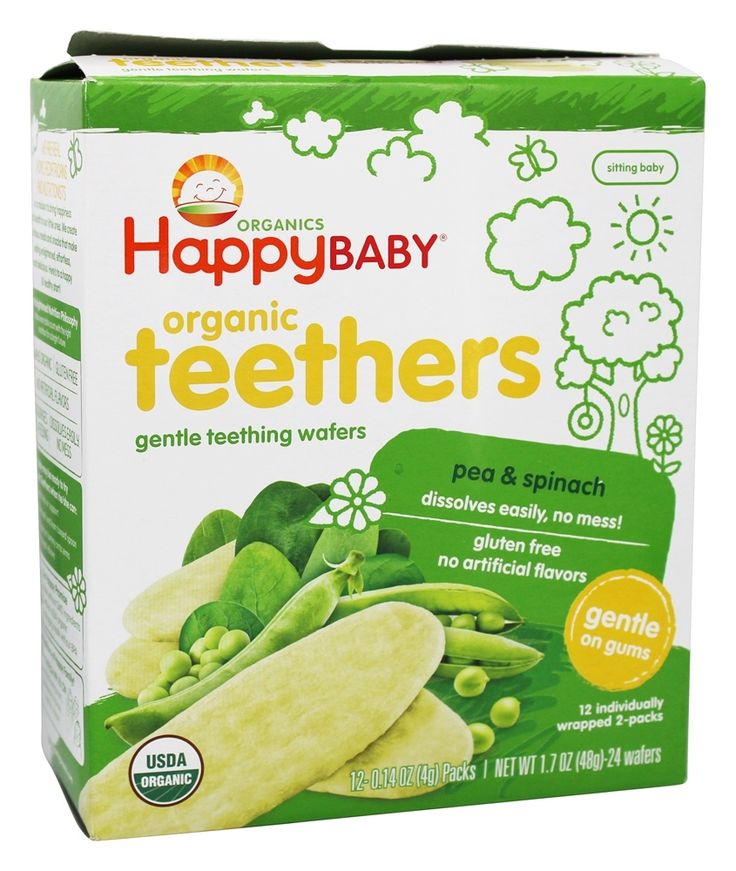 If this sounds like your life right now, then chances are your baby is teething – I hear your pain Momma!
If this sounds like your life right now, then chances are your baby is teething – I hear your pain Momma!
I recently saw a diagram showing how far those baby teeth have to move down, before they are pushed through their gums. It really is no wonder that your baby has gone off food and is an irritable little mess. Oscar had a terrible time when it came to teeth. I always knew they were coming because;
- His appetite for solids would decrease.
- His appetite for breastmilk would increase.
- He wanted to be constantly in my arms.
- His little bum would have a rash.
- He would wake up every few hours screaming 🙁 (that really was the worst one).
I actually did a happy dance around his bedroom with him in my arms when he cut his 20th tooth! So how did we get through it? I was asked by the lovely people at Teetha to write a post with my top tips for teething and so I’ve put together my top 10 tips that will hopefully help you and your baby get through this!
Teething Pops
Ice is a natural pain reliever so I always had pops on hand along with some chilled teethers. Great for little gums and give immediate relief to your little one. For the ice-pops I always try to get as much goodness into them as usually my little guy had gone totally off food. These are my favourite ideas:
Great for little gums and give immediate relief to your little one. For the ice-pops I always try to get as much goodness into them as usually my little guy had gone totally off food. These are my favourite ideas:
Perfect for babies under 6 months. I could always get my baby to eat one of these. Just pump some breastmilk and freeze into an ice-pop mould. If you’re not breastfeeding, you can also use formula.
‘Mommy & Baby’ Avocado & Spinach Smoothie (Frozen Into Pops)
If your baby is on solids and you’re looking for a super nourishing pop then this one is for you and your baby. Super easy to make and then freeze into little ice-pops. I love avocado because it just contains so much goodness and is a little meal in every bite. When mixed with a little banana, spinach and yogurt these pops are just so nutritious. I added a teaspoon of maple syrup because I wanted my baby to eat them (he hadn’t eaten anything but drank breastmilk for days). This recipe should make 12 mini pops so it is only 1 1/12th of a teaspoon of free sugar which is a very tiny amount anyway.
This recipe should make 12 mini pops so it is only 1 1/12th of a teaspoon of free sugar which is a very tiny amount anyway.
Find the recipe here: ‘Mommy & Baby’ Avocado and Spinach Smoothie
Banana And Turmeric Lassi (Frozen Into Pops)
I love these because they are sweet, they contain lots of goodness but most importantly the secret ingredient is turmeric, a natural inflammatory. Babies just love these pops and they are a great way of cooling little gums down and getting some nutrients into them at the same time.
Find the recipe here: Banana and Turmeric Lassi
Peanut Butter And Sweet Potato Chocolate Mousse (Frozen Into Pops)
These pops are one of my favourite things EVER! They taste like a healthy magnum, are full of goodness and they are so nutritious. The best thing is that they contain sweet potato, and not just a little sweet potato! 12 pops contain one of those large sweet potatoes that you look at thinking ‘what on earth do I do with this?’.
Find the recipe here: Peanut Butter & Sweet Potato Chocolate Mousse
Melon And Mint Zingy Teething Pops
Sometimes the simplest ingredients make the best things. Take these pops for example – 3 simple ingredients watermelon, mint and lime juice blended up together and frozen. Oscar LOVED these! So easy to make and they will have those little gums laughing away in no time.
Find the recipe here: Melon and Mint Zingy Teething Ice Pops
Good Teething Foods (besides pops).
- Soup – I know soup is a contradiction from frozen but soup is soft, easy on the gums and if you add lots of goodness it is a great way to get your little one eating something. I left soup go cold as Oscar when teething preferred it that way. Load a spoon, soak some soft bread or just half fill a beaker up with soup and let them help themselves. You may have to make the beaker holes a little bigger for the soup to come out.
 Oscar liked chewing the top of the beaker as the hardness seemed to help his gums and a little soup would come out with every chew. Double win!
Oscar liked chewing the top of the beaker as the hardness seemed to help his gums and a little soup would come out with every chew. Double win! - Muffins & Pancakes – If you search for muffins and pancakes on Baby Led Feeding you will find a huge range of healthy muffins – find the listing here: all my muffins and all my pancakes. The great thing about these is they are all super nutritious and soft on little gums. Top tip before giving your little one a muffin is to give them some Teetha granules about 20 minutes beforehand. They will be more inclined to eat them if their gums are feeling calmer.
- Cooled Fruit – Bananas are great! Just peel one, then stick your finger through the top and it turns into 3 spears! Stick them in the freezer and take out about 10 minutes before giving to your baby. It will have started to go soft again but will be cool enough on your babies gums. Chilled ready-to-eat mango spears are also really great as are spears of chilled avocado.

Homemade Teething Biscuits
My lovely pal Stacey over at My Kids Lick the Bowl had this lovely recipe for sweet potato teething biscuits which are really good!
Find the recipe here: My Kids Lick the Bowl
Pressure
- Frozen Washcloth – I always had a wet washcloth in my freezer for those really bad days. Take out of the freezer a few minutes before, shake to release any ice particles and so that it won’t freezer burn your little ones gums. Then just let your baby chew on it to get some relief.
- Washed clean finger – If you have ever wondered ‘are my baby’s gums o.k to chew food’ then this tip will really help relieve that worry. Just clean your hands well and gently massage your little one’s gums to ease the pain. This is great if you are using cooling Teetha Teething Gel as it is natural and really helps alleviate pain.
Teethers
- Cooled Teething Rings – Cooled teething rings are great for little gums.
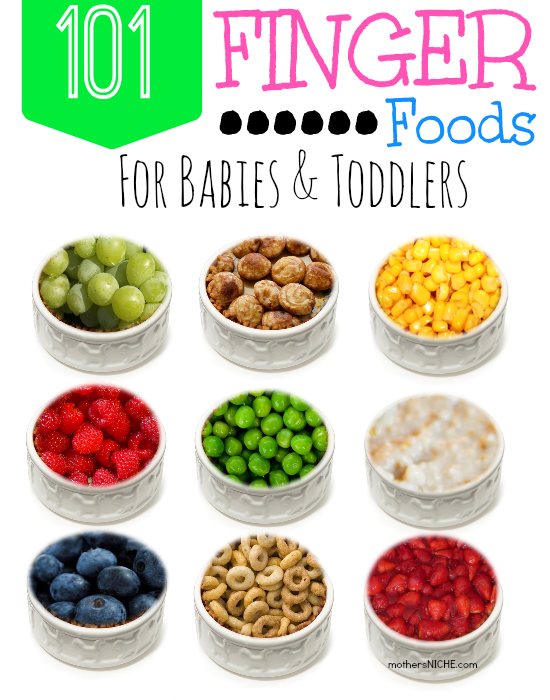 Just make sure you read the instructions and never place in the freezer as this can damage your baby’s gums if frozen. I used really natural ones that were PBA-Free.
Just make sure you read the instructions and never place in the freezer as this can damage your baby’s gums if frozen. I used really natural ones that were PBA-Free. - Rubber Spatula – I know this sounds like a crazy one but Oscar loved the spatula when he was cutting teeth
Natural Pain Relief
Camomile Granules or Gel
I have been using camomile granules since my daughter Jade (who is now 15) was a baby and I have since used it on my two boys as well. I loved it because it is made using only natural ingredients including chamomile which really helped to calm them down and it can be given to babies from 3 months+ so great if your little one has started cutting teeth early.
I found it especially great before mealtimes especially for Oscar. I just poured the granules into his mouth and within 10/15 minutes he was calmer and more inclined to eat his food. It was also great during the night when his gums seemed to hurt him more than usual. It must have been sore to latch on and I knew he wanted milk so I gave him Teetha and walked around with him for a few minutes until it took effect. Then he seemed to feed much better and would go back to sleep. Some relief for Mommas too!
It must have been sore to latch on and I knew he wanted milk so I gave him Teetha and walked around with him for a few minutes until it took effect. Then he seemed to feed much better and would go back to sleep. Some relief for Mommas too!
Like the granules the camomile teething gel is made using natural ingredients with the main one being chamomile. It relieves the symptoms of sore gums, flushed cheeks and dribbling so quickly. I stored it in the fridge so it was cold, then using a clean finger applied about a pea-sized amount onto Oscar gums and massaged it in. Massaging their gums with the gel really, really was so effective. I found this method great before breastfeeding as it was like an instant relief for him.
First foods broccoli first foods for baby led weaning broccoli Fussy eaters Starting baby led weaning Finger foods baby led weaning first foods Freezer Filler Recipes Buddah Bowl Buddha Bowl Toddler Food Baby Bowl Recipes
Finger food - Encyclopedia Baby food
Viktoria Levchuk©
Finger food is baby food prepared in the form of pieces of boiled soft food so that the child can independently take it and transfer it to the mouth, chew it or swallow it without anyone help and any problems.
Finger food is a fun way to encourage the development of motor coordination and skills for biting, chewing and self-feeding. Food in pieces should be easy to grasp by children's fingers and long-term storage, and should not contain bones or seeds. nine0007
As soon as the child begins to take food with his fingers and put it into his mouth with reasonable hand-eye coordination, then the fun begins! Let your child experiment with soft snacks such as a banana or peach that can be “hand-mashed” to the right consistency. The more a child experiments with finger food, the faster he will masterfully feed himself.
Finger food helps keep a child's food interest. As soon as he begins to feed himself on his own, then new taste horizons open up for him. What child refuses to try to bring the product to his mouth on his own, even if he didn’t really like it before. nine0007
Contents:
Very often mothers think at what age should they give finger food to their baby.
Honestly, even for me it's a difficult question. It's just that sometime between eight and nine months, the baby began to eat small pieces of food. The change in the consistency of food by age is very well described in the WHO recommendation, so it should be guided by.
Food consistency up to a year. Click on me!!!
However, you should not do it blindly and try to feed the baby in pieces at a certain age, perhaps he will not be ready yet. Children are all different, some want food in pieces, almost from the beginning of complementary foods, others are not ready for lumpy food for up to a year or more. Therefore, any decision on finger food is made based on the child and his readiness. An excellent preparation for finger food is a nibbler, which will prepare the child for lumpy food. nine0007
The child has no teeth
Click on me!!! A child's gums are incredibly strong, as is the tongue, so the number of teeth is not an indicator of whether to give finger food or not. If the decision has been made to start complementary foods and the baby is doing well with mashed foods, then you can safely start giving small pieces of soft food when the baby is ready for it. At this stage, it is important to let the child try to eat food of a different consistency, more complex, in order to train the maxillofacial apparatus. Thus, the child gradually prepares for the full chewing of food with the help of the entire jaw, teeth and tongue. nine0007
If the decision has been made to start complementary foods and the baby is doing well with mashed foods, then you can safely start giving small pieces of soft food when the baby is ready for it. At this stage, it is important to let the child try to eat food of a different consistency, more complex, in order to train the maxillofacial apparatus. Thus, the child gradually prepares for the full chewing of food with the help of the entire jaw, teeth and tongue. nine0007
Knowing if finger food is safe for a child
A good rule of thumb to help prevent choking is to avoid anything hard (e.g. raw carrots), round (e.g. whole grapes), sticky (e.g. , spoon of nut butter) or too much gummies (such as gummies). At first, the child is given pieces of food in the form of sticks, which can be easily clamped in the child's chick, later, when the child begins to control the finger grip better, you can move on to cubes. At first, finger food should be soft, boiled and melt in your mouth. As a child learns to manage with such products, it is possible to complicate the task and switch to fresh soft foods, etc. nine0007
At first, finger food should be soft, boiled and melt in your mouth. As a child learns to manage with such products, it is possible to complicate the task and switch to fresh soft foods, etc. nine0007
Foods that squeeze easily between fingers are good for older children and for younger children. Around 16-18 months, many babies are ready for more complex textures. During this period, cutting food into pea-sized pieces is also a good idea - many babies tend to put large pieces of food in their mouths, so small cubes are used to avoid choking. We always adjust the sizes of products according to the age and eating experience of our own child. nine0007
Usually the first finger food is biscuits or baby biscuits, which are very soft and dissolve easily in the mouth. The baby first sucks it, procrastinates, and learns to roll pieces of food in the mouth with the help of the tongue. A little later, when the teeth appear, you can give the product a little harder, for example, a soft apple, some parents play it safe and give a baked apple without a peel.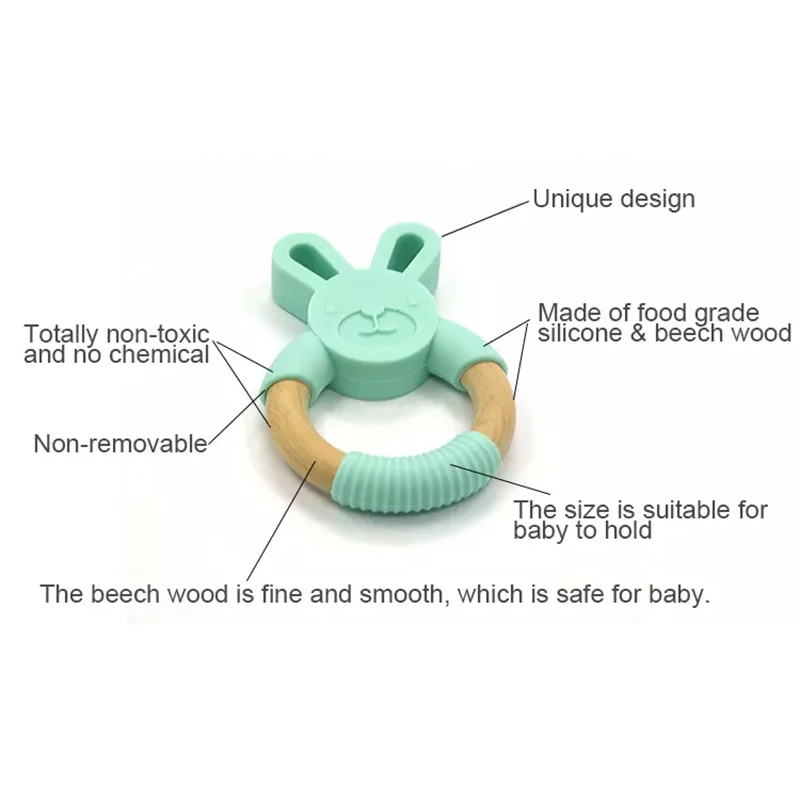 Later, as new foods, vegetables and fruits are introduced into complementary foods, they are offered in the form of finger food, such as boiled broccoli or cauliflower. In general, the child can be offered almost all products in the form of finger food, which is introduced into baby food. nine0007
Later, as new foods, vegetables and fruits are introduced into complementary foods, they are offered in the form of finger food, such as boiled broccoli or cauliflower. In general, the child can be offered almost all products in the form of finger food, which is introduced into baby food. nine0007
Should the product be peeled or not?
We give an apple to a child without a peel. The first finger foods in the form of vegetables and fruits are given without skins. Yes, the skin of many fruits and vegetables contains valuable nutrients. It is often recommended to leave the skin on in order to take full advantage of the nutrients contained in the product. But removing the top layer from fruits and vegetables helps reduce the amount of pesticides that may be in the product. Peeling fruits and vegetables helps avoid choking hazards due to the rough texture of the skins. The peel also usually sticks to the palate in the child's mouth, thereby hindering him, and can be there for a long time, and when the child swallows, the probability of choking in the absence of an adult nearby is higher.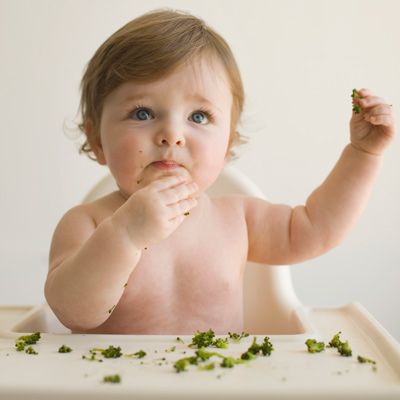 Getting rid of the skin at the beginning of complementary foods also helps prevent disorders
Getting rid of the skin at the beginning of complementary foods also helps prevent disorders
digestion. And we also take into account that there are some vegetables and fruits, such as pumpkin and avocado, which need to be peeled, because their peel is really inedible. It is not worth getting rid of the product from the peel for a long time, only at first. Usually the first couple of months of complementary foods and exposure to finger food. Then the product with the peel is given to the child in the presence of an adult, after which it is advisable to check the baby's mouth to see if he swallowed everything. Forcibly open your mouth should not be, play the game "Show your tongue or where are your teeth." By the age of 1.5, the child copes well with the peel of fruits and vegetables, if it is too rough, then it easily spits it out. nine0007
Choking
The presence or absence of teeth does not mean that a child can chew.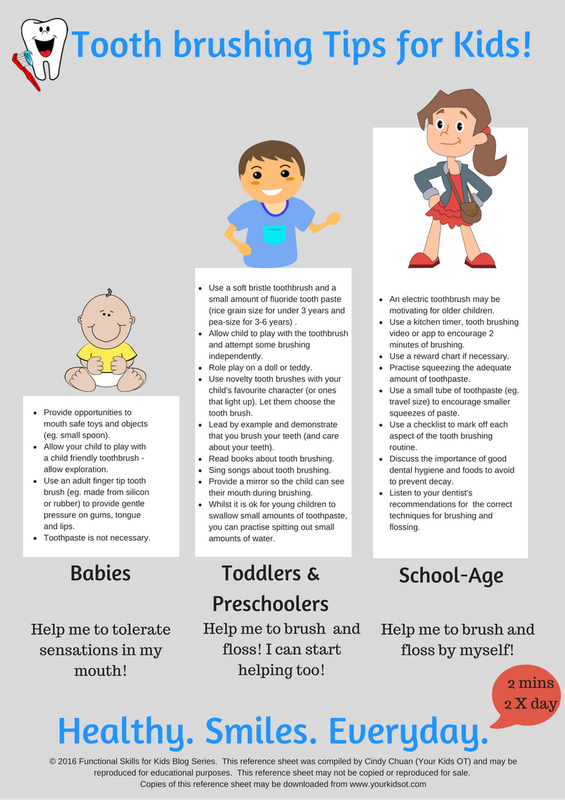 Sometimes children can bite off a piece of food, try to swallow it whole and choke, so never leave a child alone while eating. Some children can store food in their mouths like hamsters, so we always check to make sure the child has swallowed everything before leaving the kitchen. You can read the article on suffocation here.
Sometimes children can bite off a piece of food, try to swallow it whole and choke, so never leave a child alone while eating. Some children can store food in their mouths like hamsters, so we always check to make sure the child has swallowed everything before leaving the kitchen. You can read the article on suffocation here.
Our finger foods
At first I gave biscuits to my first child, later I switched to a fresh apple, mostly fresh fruits, he sucked and procrastinated them more than he ate. Later, food appeared in the form of a toy, i.e. we crumbled it, crushed it, and sometimes something got into our mouths. However, since breast milk is always given at the end of complementary foods, I was not too worried about whether the baby was full or not. nine0007
With the second child, finger food was a gradual transition from the nibbler. We used it for about a month, then I ventured to give the first pieces of food. But to be honest, the child himself tried the first pieces of food, namely, he stole an apple and took a bite. The first experience of finger food is always scary, because at first the child often coughs and spits out food, he is learning, so it is important to be with the child, if something goes wrong, then the parent will be able to provide first aid. I remind you that the child is suffocating quietly, not a single sound. If he coughs, clears his throat, then everything is within the normal range, you need to help get rid of the food that interferes. nine0005 Rules for helping with choking know before introducing finger food into complementary foods. It is imperative to look and study, and then give a new consistency of complementary foods.
The first experience of finger food is always scary, because at first the child often coughs and spits out food, he is learning, so it is important to be with the child, if something goes wrong, then the parent will be able to provide first aid. I remind you that the child is suffocating quietly, not a single sound. If he coughs, clears his throat, then everything is within the normal range, you need to help get rid of the food that interferes. nine0005 Rules for helping with choking know before introducing finger food into complementary foods. It is imperative to look and study, and then give a new consistency of complementary foods.
Of course, at first, only one type of finger food is placed in front of the baby, later a plate is bought, divided into three to five sections, which is filled with finger food. The baby is already given a choice of what to eat, so you can easily determine the taste preferences in nutrition.
Finger food quick hacks
- The first finger food should be well kneaded between the gums.

- Food in pieces should be age appropriate - do not offer whole eggs to an 8 month old baby .
- If the child cannot raise his head and sit up without help, do not offer him finger food.
- The child should always sit in an upright position, not walk, especially at the first meeting, when he is offered baby food in the form of pieces, to avoid suffocation. nine0074
- NEVER leave your child unattended when serving finger food.
Examples of finger food
The first finger food is a biscuit or a baked apple. Those. food that does not need to be chewed, it melts easily in the mouth without additional help from the child. You can start with foods that have been well received by the child in a pureed form on a spoon, serving them in convenient cubes or pieces - the size of a pea for harder items, the size of a stick or wedge for softer foods. nine0007
Examples of finger food are:
Click me!!!- pieces of soft bread or crackers
- Soft cheese, Chedder or Mozarella
- Banana
- Ripe pear without peel
- Ripe soft green apple without a peel, the first time you can give boiled
- Boiled cabbage
- .
 carrots
carrots - Boiled potatoes
- Boiled green peas
- Boiled pumpkin
- Boiled fish
- Boiled meat in the form of meatballs
- Pasta
- Quail eggs, etc.
*All products must be familiar to the child or introduced into complementary foods.
Finger Foods to Avoid
When it comes to feeding your baby with morsels, the biggest problem is preventing choking. So we do not allow him to eat anything without the presence of parents or any adult nearby. And we exclude any food that can get stuck in the child's airways:
Click me!!!- Popcorn,
- Nuts, peanuts,
- raisins and other dried fruits,
- raw vegetables (e.g. carrots),
- grapes,
- Cherries without bones, hard fruit and vegetables with a peel of
- Zhevaliy Confinctions
- popcorn, pretzels, corn chips and other snack foods
- marshmallows, etc.
Most doctors do not recommend these foods until the child can eat them safely - around 4 years (although it depends on the child, closer to 3 or 5 years). nine0007
nine0007
Finger food after a year - Encyclopedia Baby food
Levchuk Victoria ©
What is finger food after a year? What it happens to be, and I wrote the finger food rule in previous articles. Today I would like to discuss finger food after a year, how it changes and how it looks. I just noticed yesterday that I have a large number of photos of finger food. I take photos almost every day since at least one meal consists of finger food. I decided to write an article and show our example. nine0007
Table of Contents:
After a year, finger food becomes very diverse, including almost all products that are introduced into baby food. If the first months of acquaintance with lumpy food, it is mostly boiled, we do not give anything raw to the child in order to avoid choking. Then after a year you can give boiled, semi-cooked and raw foods, which is very convenient, well expands the diet of baby food.
Sometimes, when laziness runs faster than thought, it's easier to collect fruits and vegetables from the refrigerator, cut them into small pieces and give them to the baby than to feed from a jar. A good second breakfast or afternoon snack, even as a snack is great. You can also organize breakfast, which consists of cheese / eggs, bread, boiled meat, apple / banana - a great snack, of course, without porridge (grain lovers - without slippers), but once a week you can take a break for yourself, and the child will nibble well such food, enjoy and train fine motor skills. The main thing is to watch and sit next to the baby so as not to choke. nine0007
A good second breakfast or afternoon snack, even as a snack is great. You can also organize breakfast, which consists of cheese / eggs, bread, boiled meat, apple / banana - a great snack, of course, without porridge (grain lovers - without slippers), but once a week you can take a break for yourself, and the child will nibble well such food, enjoy and train fine motor skills. The main thing is to watch and sit next to the baby so as not to choke. nine0007
A big plus for is that it doesn't require a lot of utensils and kitchen utensils, usually a knife, a cutting board and a baby plate.
Another plus for finger food. If the products are semi-solid, not very soft, then you will hardly have to wash the child and the place where he eats will remain almost clean.
+ the child trains fine motor skills, the parent does almost nothing, and the child learns.
See how many pluses there are just from the fact that mom put the right finger food on the table for the baby. nine0007
nine0007
Finger food is inexpensive and easy to find in any refrigerator.
Moreover, I would like to draw your attention to the fact that after a year, lumpy food is taken not only at the table, but also on the street, on the move, etc. The child can already move around the apartment with a piece of an apple or pear, playing and snacking. The main thing here is to keep an eye on the baby, they love to make nests, and fruit nests rot or dry well. In short, it's nice to find another cache of a child, and even more fun to pull it out of your mouth when a child has found it. nine0007
For long trips, finger food is an excellent solution, it is easy to transport, nothing will overflow, long-term storage without refrigeration is possible. A small advertisement for finger food.
Our finger foods
At the moment we love finger food. We like to eat cheese, eggs, fish/meat cutlets, bread, different fruits, vegetables on our own. The child takes the product in his hands and stuffs everything into his mouth, then chews. Not always, it turns out, to eat all the food, sometimes he loses it, then I find it either on the floor or in a high chair. Therefore, portions of finger food are quite large, but about half gets into the mouth. Partly we play, although we try to stop such behavior, but the child is only a year old, which can be discussed. nine0007
Not always, it turns out, to eat all the food, sometimes he loses it, then I find it either on the floor or in a high chair. Therefore, portions of finger food are quite large, but about half gets into the mouth. Partly we play, although we try to stop such behavior, but the child is only a year old, which can be discussed. nine0007
Soups can also be eaten like finger food, it's just that we are friends with a spoon, but it's still bad, liquid broth pours out of a spoon. Therefore, we like to catch hard boiled foods from the soup and eat them. Sometimes he scoops up the product with a spoon, then takes it from the spoon, puts a piece into his mouth with his hand, and only then chews it.
I hover over my plate so often just watching my son eat. It's so cute and messy and amazing every time. He tries, sometimes he freaks out, and then the spoon flies to the floor, and his hand climbs into the plate. Every time he comes up with a new way to eat food. Only recently they weaned him from putting his foot on the table, put his foot down, sits on his own, hands in a plate and eats, in general, in my adult opinion, it’s quite uncomfortable, but he sits and eats. nine0007 Click me!!! Click on me!!! Click on me!!! Click on me!!!
nine0007 Click me!!! Click on me!!! Click on me!!! Click on me!!!
Finger food is hard
Click me!!!For some reason, many mothers think that they need to come up with finger food, try to cook original recipes, etc. But it's not.
The child has switched to a common table or partially switched, which means you can give adult products. Ordinary cutlets are perfectly chewed by the number of teeth that the child now has in his mouth, he chews something with his teeth, something with his gums. Cottage cheese casserole, cut into small pieces, an excellent snack. nine0007
All fruits and vegetables included in complementary foods can be given as finger food. Just be careful with vegetables, since most of them are still boiled. But the child is already able to digest food 2 days old if it was stored in the refrigerator. Therefore, we cook several types of vegetables at a time and divide them into several meals. If you don’t want to give a pure product, then we make sauces, for example, cheese sauce for broccoli, it’s delicious, the kids like it.
Meat and fish, simply boiled. If you divide raw meat or fish into small pieces, then they will cook for no more than 15-30 minutes. But since the child already eats chicken, beef, when we cook soups or borscht for the whole family, we put aside a piece of meat / fish for the next meal of the child. I don’t know about you, but since I’m on parental leave, I cook every 2 days, so I can feed my family with fresh meals. Of course, it is better to cook the meat each time new, or store it in the broth for a day so that it does not dry out. Then I don’t like meat to taste, but this is my personal opinion. nine0007
There are many examples of finger food, see the photo. Even in the group in contact Baby food (Encyclopedia) under the tag #creative breakfast, you can see examples of finger food. Click on the photo and see it in a larger size.
Chicken-carrot cutlet, broccoli and cauliflower Bananas and apples with sugar-free yoghurt Apples baked in the oven. Chicken fillet, cucumber, broccoli, apple, Borodinsky black bread, children's cottage cheese as a sauce Broccoli, carrots and boiled fish fillet — Navazhka Pasta and broccoli Prunes Broccoli and cauliflower Chicken and carrot cutlet, pasta, cucumberAbout finger food sauces
I know how much I want to help my child diversify his taste preferences, but it's too early.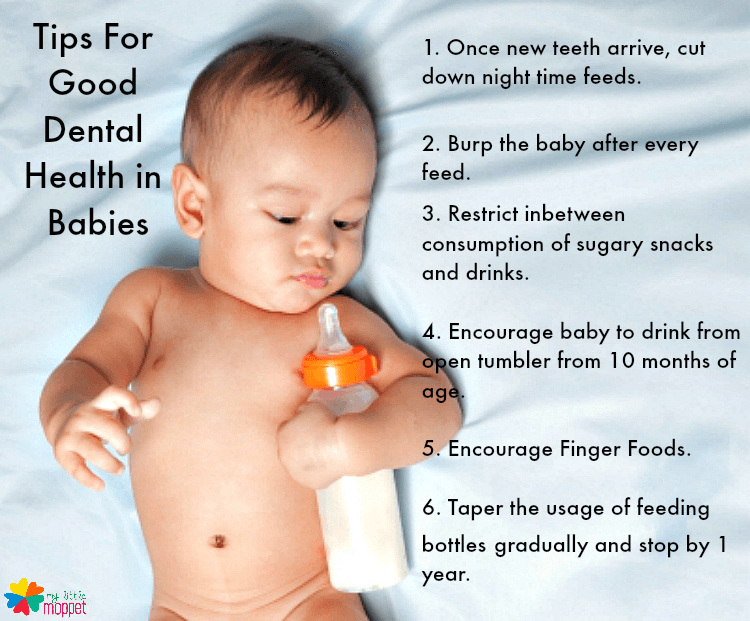 The kid is still chaotically waving his arms and using them poorly. Although you probably noticed how carefully he takes a spoon or a mug to perform simple actions, but at the same time he strives to drop or turn them over. That's why it's not the time for finger food sauces. Just because the child can turn it over, but most likely it will get dirty from head to toe, which mom will have to clean up. You can put a spoonful of sauce and show the baby how to dip a piece of food in it, but you will have to carefully monitor the actions of the child, otherwise there will be more cleaning. nine0007
The kid is still chaotically waving his arms and using them poorly. Although you probably noticed how carefully he takes a spoon or a mug to perform simple actions, but at the same time he strives to drop or turn them over. That's why it's not the time for finger food sauces. Just because the child can turn it over, but most likely it will get dirty from head to toe, which mom will have to clean up. You can put a spoonful of sauce and show the baby how to dip a piece of food in it, but you will have to carefully monitor the actions of the child, otherwise there will be more cleaning. nine0007
What is now suitable for sauces. If the child is familiar with dairy products, then yogurt, cottage cheese with yogurt (so that it is liquid), cheese sauce without spices, and, probably, that's all.
You can also offer any vegetable/fruit puree for sauce that your child is familiar with.
Finger food hacks
Banana is easy to eat with a small hand In the article The Fifteenth Week of Weaning - Turkey and Garlic Stew, I wrote how to cut a banana so that it is convenient for a child to eat.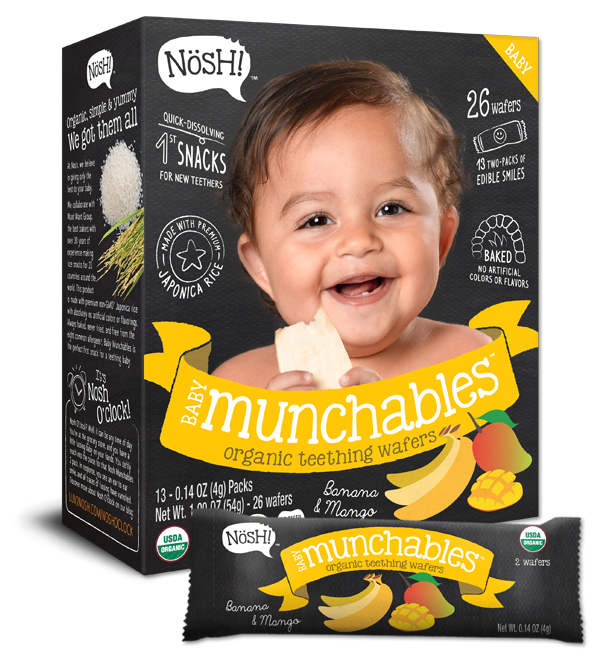 In an article about bananas in baby food, she wrote how to quickly and easily make a fruit convenient for finger food. Now I will not repeat myself, I just attach a photo. nine0007
In an article about bananas in baby food, she wrote how to quickly and easily make a fruit convenient for finger food. Now I will not repeat myself, I just attach a photo. nine0007
I also pay attention, if a child eats from a common table, then we make a dish under the child's hand. Those. if a cutlet, then a small size, three or four cutlets can be made for the youngest member of the family. It’s just that it’s inconvenient to hold a large chunk in your hand, and now the main thing is a manual grip so that the child can hold the food in his fist and bite off. Therefore, food can be made in the form of a rectangle, like fish sticks.
Pear, it is convenient to take with a small hand, the child eats everything without a peel. With the same consideration, we prepare children's cookies, cut bread pita bread or bread, cottage cheese casseroles and muffins. The child is comfortable with either a thin long stick, or medium squares. We tear the meat into fibers or cut into small cubes.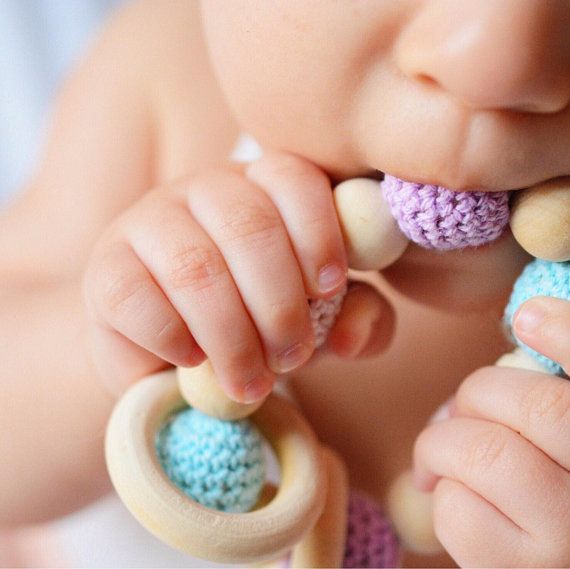 You should not grind food too much, it is difficult to take it with children's fingers, otherwise you will see a picture of how the baby is trying to take food from the table with his mouth. nine0007
You should not grind food too much, it is difficult to take it with children's fingers, otherwise you will see a picture of how the baby is trying to take food from the table with his mouth. nine0007
An apple corer is very useful. With it, you can make a long round tube without a peel. It is convenient for the child to hold, the peel does not interfere with biting the delicious middle. Suitable for large apples, pears, cucumbers, i.e. medium hard products. Fresh carrots are a very hard product, so for now only a grater. In short, fresh vegetables and fruits of increased hardness (carrots, white cabbage, etc.), which need to be carefully chewed by a child after a year, should be given fresh after a fine grater until the set of teeth expands. nine0007 Dividing a banana into three parts with a finger. If the pear has a core, then cut it out. An apple without a core. Next to it is a fruit peeler. We give an apple to a child without a peel.
Basically, if you have any doubts about giving your child fresh or boiled finger food, then boil it, it will be safer.

